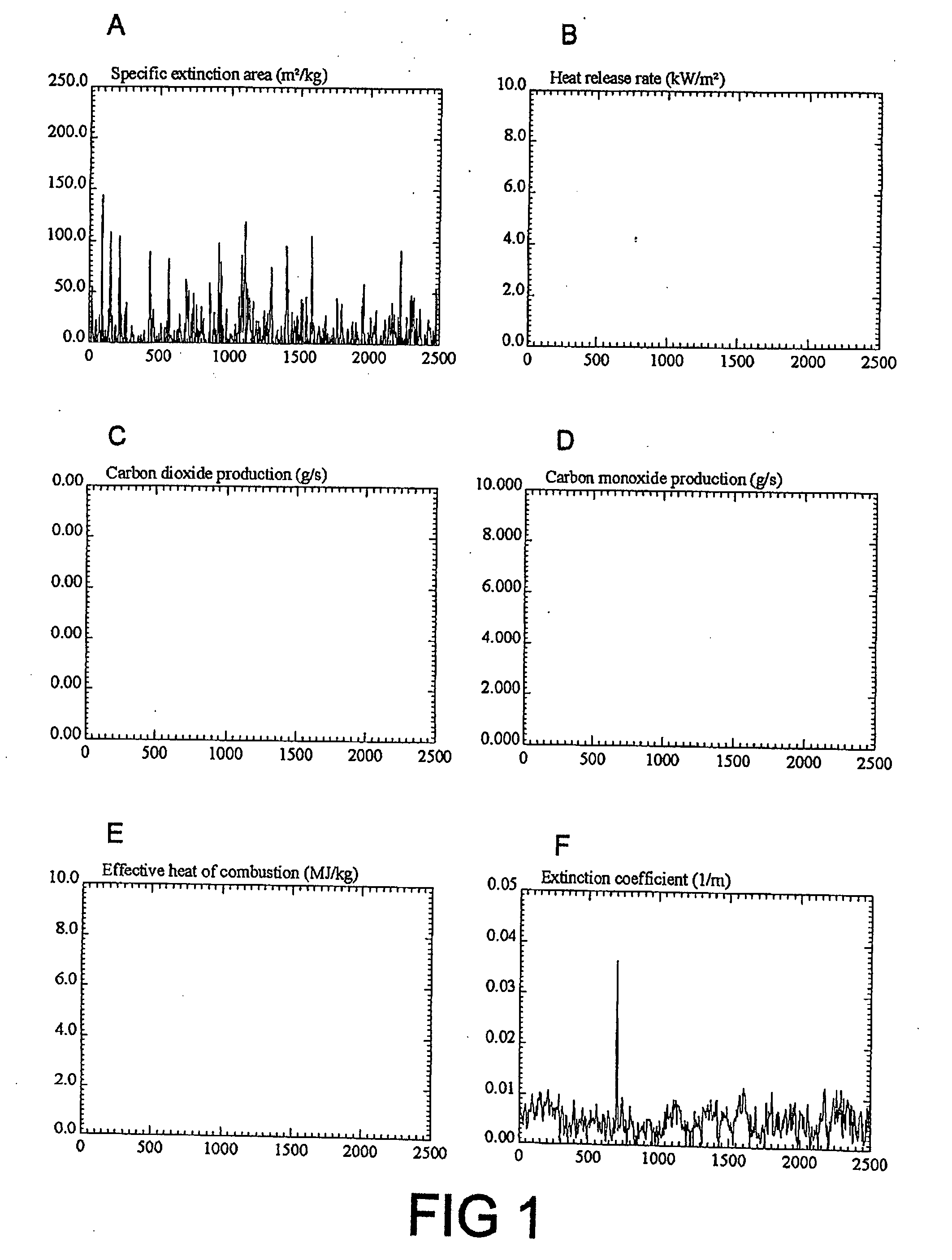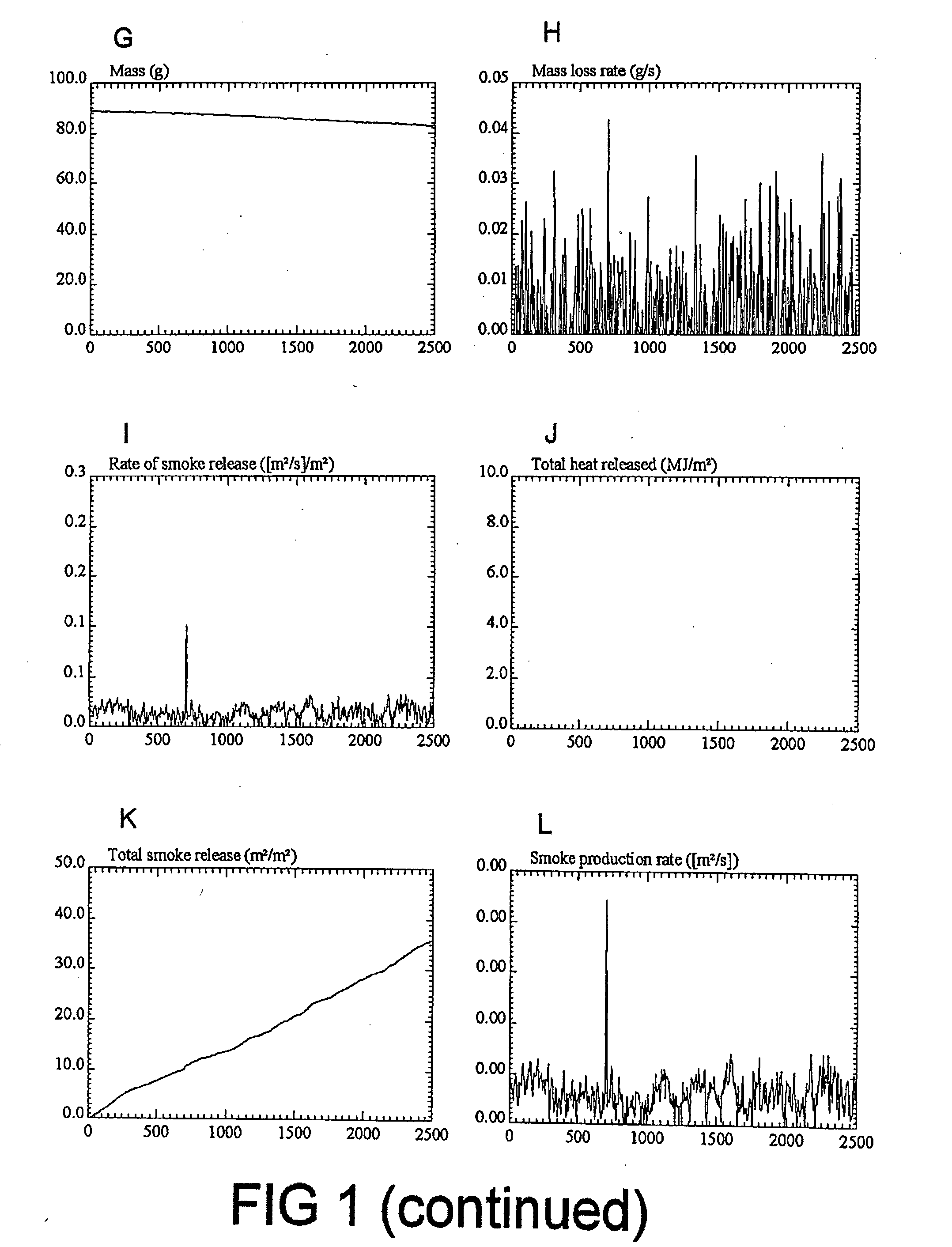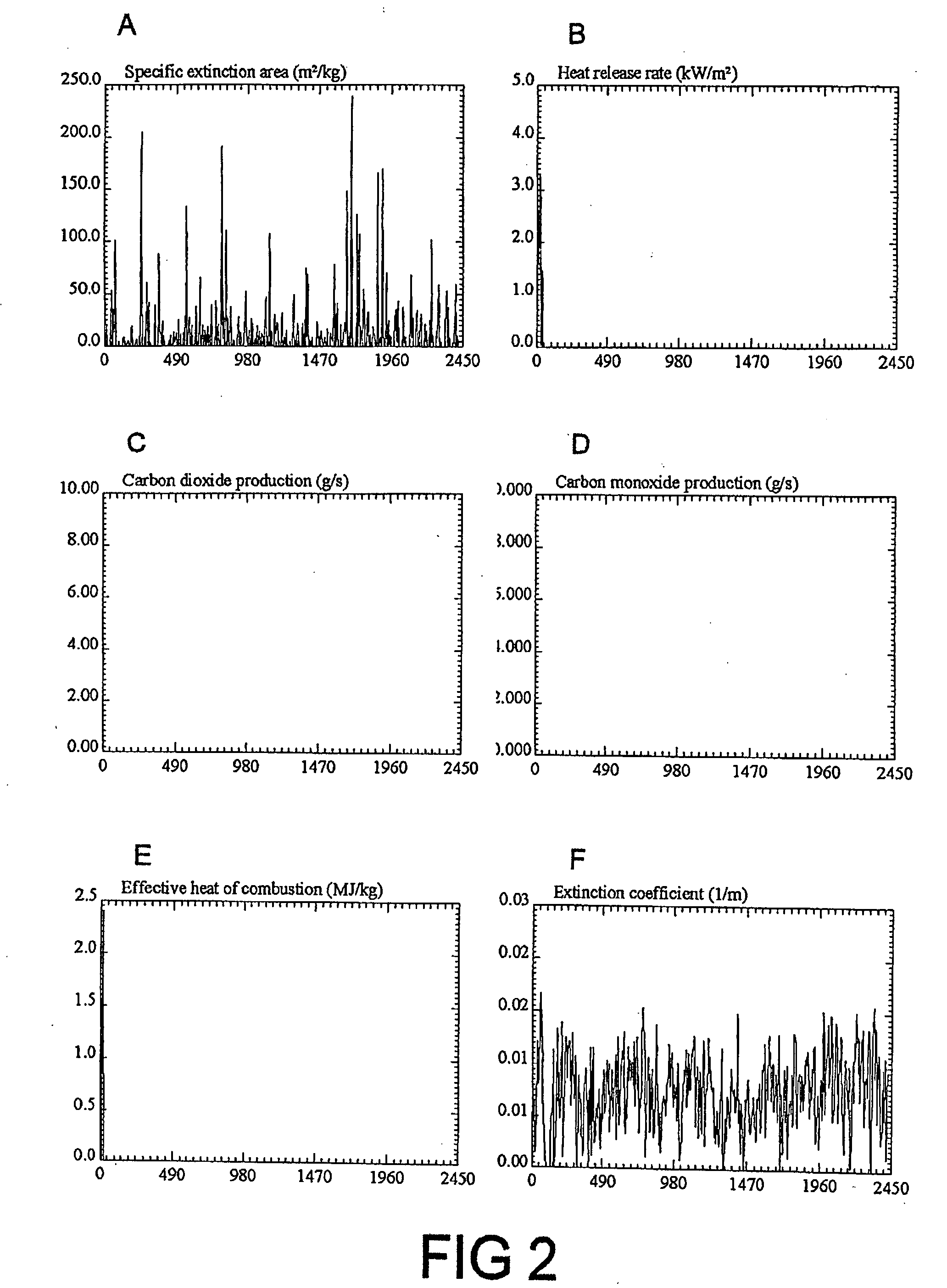Fire retardant compositions and methods of use
a composition and fire retardant technology, applied in the field of compositions for treating materials, can solve problems such as unexpectedly high fire retardancy levels of compositions, and achieve the effect of high fire retardancy
- Summary
- Abstract
- Description
- Claims
- Application Information
AI Technical Summary
Benefits of technology
Problems solved by technology
Method used
Image
Examples
example 1
Production of Composition Comprising Potassium Tetraborate, Potassium Acetate, and Dipotassium Citrate.
[0066]
7CH3COOH+7KOH+21 H2O=7CH3COOK+28H2O
[0067]400 gm of KOH is added to 380 gm of water and mixed until dissolved, allowed to cool below 50° C., and acetic acid added slowly to about pH 8 to 9. This produces about 1200 gm of potassium acetate solution at about 58% strength. 990 gm of boric acid is then added and mixed to form a slurry.
16H3BO3+8KOH+24H2O+(C6H10O5)n=4K2B4O7−(C6H10O5)n complex+52H2O
[0068]450 gm of KOH is added to 433 gm of water and mixed until dissolved. 100 gm of starch is then added and mixed. A turbid yellow mixture results which gradually clarifies to a clear transparent yellow solution. The alkaline starch mixture is then added slowly while mixing to the potassium acetate and boric acid slurry. The resultant complexed solution mixture of about 300 gms contains about 30% potassium tetraborate and 22% potassium acetate. The pH of the resultant solution may be adj...
example 2
Larger Scale Production of Composition Comprising Potassium Tetraborate, Potassium Aacetate, and Dipotassium Citrate.
[0072]1010 gm of flaked potassium hydroxide is added to and dissolved in 900 gm of water with stirring. When the temperature has reduced to below 50° C., acetic acid is added slowly until the pH is about 8 to 9. As shown in the above equation, this results in about 3000 gm of potassium acetate solution at about 59% strength.
[0073]To this solution is then added, while stirring, about 1540 gm of citric acid, and about 1980 gm of boric acid, resulting in a slurry and enabling the boric acid to complex with the potassium acetate and the citric acid. About 1800 gm of flaked potassium hydroxide is added to and dissolved in about 1830 gm of water, while stirring. This alkali solution is then added slowly with stirring to the slurry mixture until reaction is complete. The solution pH can be adjusted with KOH, or acetic or citric acid as desired. The resultant complexed soluti...
example 3
Composition Replacing Citrate with Tartrate.
[0074]While mixtures as illustrated by Example 2 have less than desired compatibility with some non-ionic water-based polymers in consequence to the inclusion of the citrate ion, other types of polymeric binders have not yet been evaluated for compatibility, but such mixtures as illustrated above provide effective non-toxic fire retardant compositions for general and other purpose applications where the use of binders or sealants is not required.
[0075]Where the inclusion of binders or sealants is desired, citrate may be replaced with tartrate. Dipotassium tartrate may be produced from tartaric acid in the fundamental equation:
C4H6O6+2KOH=K2C4H4O6+2H2O,
[0076]This equation is in fact a 2-step process wherein potassium hydrogen tartrate is formed as an intermediate product:
C4H6O6+KOH=KHC4O6H4+H2O
and,
KHC4O6H4+KOH=K2C4O6H4+H2O
[0077]It should be noted that the solubility of dipotassium tartrate is 2000 gram / litre whereas the solubility of potass...
PUM
| Property | Measurement | Unit |
|---|---|---|
| concentration | aaaaa | aaaaa |
| concentration | aaaaa | aaaaa |
| concentration | aaaaa | aaaaa |
Abstract
Description
Claims
Application Information
 Login to View More
Login to View More - R&D
- Intellectual Property
- Life Sciences
- Materials
- Tech Scout
- Unparalleled Data Quality
- Higher Quality Content
- 60% Fewer Hallucinations
Browse by: Latest US Patents, China's latest patents, Technical Efficacy Thesaurus, Application Domain, Technology Topic, Popular Technical Reports.
© 2025 PatSnap. All rights reserved.Legal|Privacy policy|Modern Slavery Act Transparency Statement|Sitemap|About US| Contact US: help@patsnap.com



